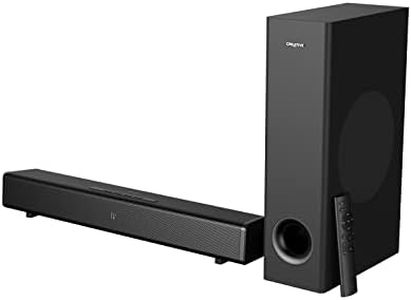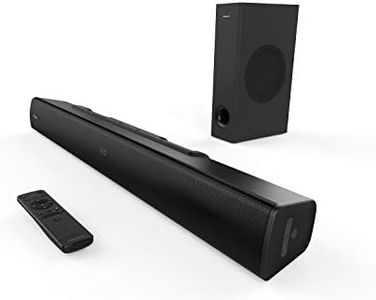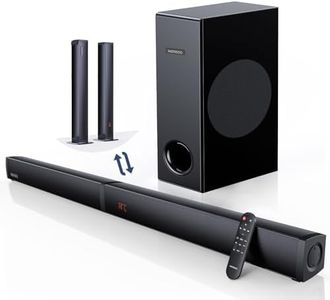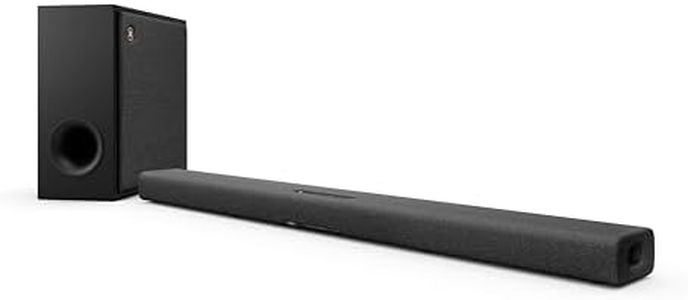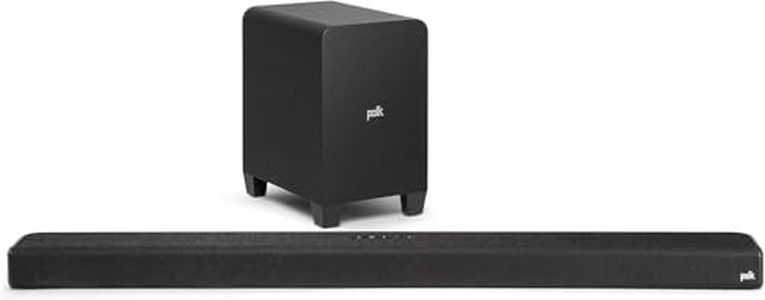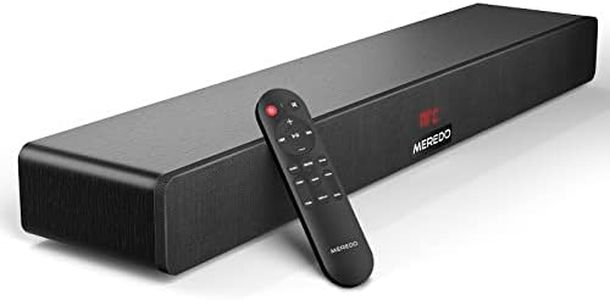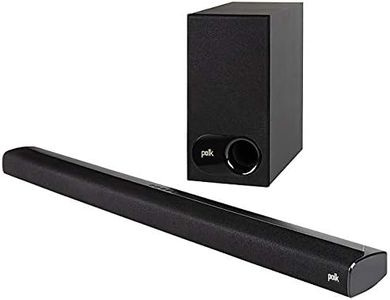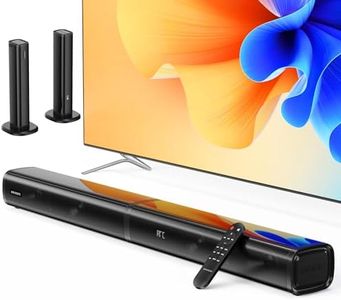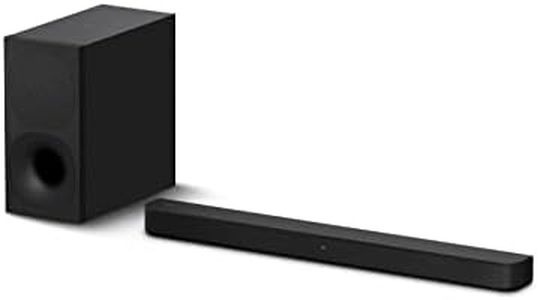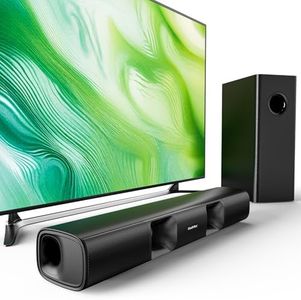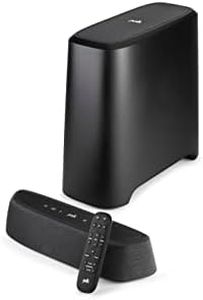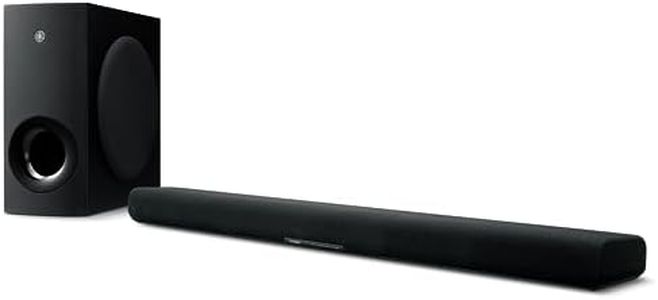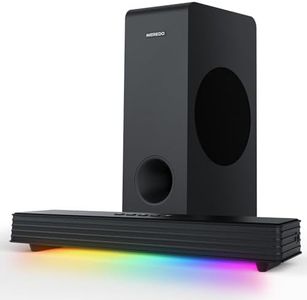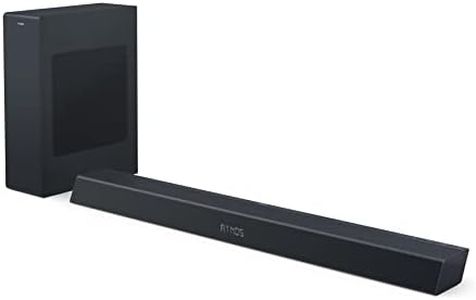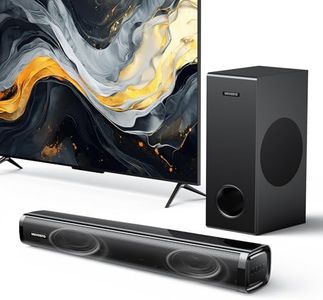We Use CookiesWe use cookies to enhance the security, performance,
functionality and for analytical and promotional activities. By continuing to browse this site you
are agreeing to our privacy policy
10 Best Soundbars With Subwoofers
From leading brands and best sellers available on the web.Buying Guide for the Best Soundbars With Subwoofers
Choosing a soundbar with a subwoofer can significantly enhance your home audio experience, making TV shows, movies, and music much more immersive. A soundbar delivers clearer dialogue and richer sound than most built-in TV speakers, while a subwoofer adds powerful bass that brings life to action scenes and music tracks. To pick the right soundbar and subwoofer combination, you should understand a few key specifications and consider how you'll use it, the size of your room, and what matters most for your listening preferences.Power Output (Wattage)Power output, typically measured in watts, indicates how loud and dynamic your soundbar with subwoofer can get. More wattage means more potential volume and depth, which is particularly important if you have a large room or if you enjoy watching content at higher volumes. Soundbars can range from around 50W (suitable for smaller rooms or more casual listening) to 300W or more (better for large living spaces or when you want a bigger audio impact). If you primarily watch TV shows or news, lower wattage is usually enough; but if you love explosive movies, concerts, or parties, aim for higher output.
Number of ChannelsChannels refer to the number of separate sound sources in a soundbar system. Common arrangements include 2.1 (two front channels and a subwoofer), 3.1 (three front channels for improved dialogue plus a subwoofer), and even up to 5.1 or higher, which simulate surround sound. If you mainly care about clear dialogue and improved basic TV sound, 2.1 works well. For more immersive movie nights or if you want to better separate voices from effects, 3.1 or higher is better. Surround-sound models can mimic the effect of multiple speakers around the room, but these are generally most enjoyable if you use your system for movies or gaming.
Subwoofer Type (Wired vs. Wireless)Subwoofers can connect to the soundbar with a cable (wired) or without one (wireless). Wireless subwoofers are much easier to place anywhere in the room, so you can choose a spot where the bass sounds best and fits your room layout. Wired subwoofers limit placement options but may have slightly less chance of connection issues. If you value clean setups or want flexibility, go with wireless. If your entertainment area is compact and simple, wired is just fine.
Audio Formats SupportedModern soundbars can support special audio formats like Dolby Digital, DTS, or even Dolby Atmos. These formats help deliver richer, more three-dimensional sound. Basic models typically handle standard stereo and Dolby Digital, which works for most TV broadcasts. If you stream a lot of movies from services that support advanced sound, or if you want the most immersive experience, pick a soundbar with support for DTS or Dolby Atmos. For regular TV and music, basic format compatibility is usually sufficient.
Connectivity (HDMI, Optical, Bluetooth, etc.)Connectivity describes how you link your devices to the soundbar. HDMI (usually with ARC or eARC) is the easiest and best for TV and smart devices, allowing you to control everything with your TV remote. Optical or digital audio works well if your TV is a bit older, while Bluetooth and Wi-Fi allow for wireless streaming from your phone or tablet. Matching your soundbar’s connections to your TV and devices makes setup easy and ensures everything works smoothly. Pick a model that matches the ways you want to connect and use it.
Size and DesignSoundbars and subwoofers come in various sizes; the size can affect both looks and performance. A soundbar should be similar in width to your TV for a balanced look and to align with the screen for the best audio effect. Subwoofer size typically relates to the amount of bass it produces—bigger tends to be deeper and louder, though it will also take up more space. Consider your room size and layout: smaller units suit cozy spaces, while larger units are better for open or bigger rooms. Always check dimensions to make sure it will fit where you want to place it.
EQ Modes and Sound CustomizationMany soundbars offer EQ (equalizer) modes or presets like Movie, Music, News, or Night mode, which automatically adjust the sound to suit different content. Some also allow manual adjustment of bass, treble, or voice clarity. This is useful if you want to fine-tune the sound for different uses or need to adjust for a particular room. If you prefer simple plug-and-play, basic presets can make things easy; if you like to tweak your audio, look for more customization options.
